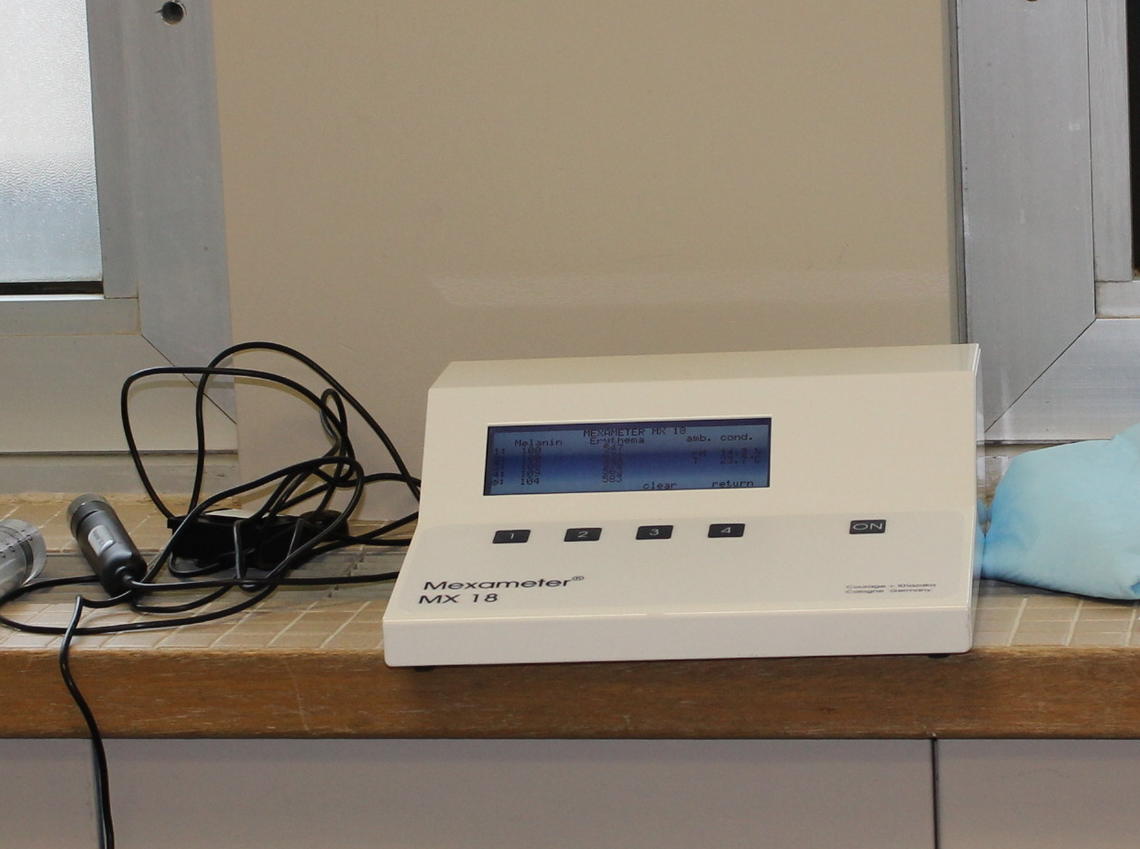Aim 3
In order to accurately assess the quality of the split thickness skin grafts that have been transplanted with human dermal stem cells, we need to evaluate the appearance and function of the graft.
The current gold standard technique used to describe the skin is to take a full thickness biopsy. In order to assess the skin over time, multiple biopsies are required which can result in delayed wound healing and other chronic problems. Therefore, we are aiming to validate non-invasive tools capable of measuring wound healing and split thickness skin graft outcomes. One example of such a tool is the mexameter which measures light reflected by the skin. Another example is the DermaScanC which uses high frequency ultrasound imaging.

Mexameter

DermaScan C
Elasticity is a very important property of normal skin that is often significantly altered in split thickness skin grafts. Assessing the elastic properties of the split thickness skin grafts transplanted with human dermal stem cells will allow us to better assess their overall function. Our xenografts (prepared for Aim 1 experiments) will be assessed using the Bose Biaxial Mechanical loading system. The data collected from this will be compared with measurements collected from 3D images of collagen fibre orientation.

Human collagen fibres
